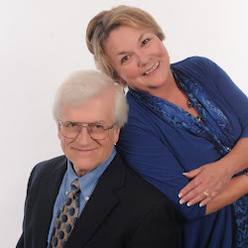I am very excited that our first contributor is Mr Charles F Emmons. Mark and Carol Nesbitt, two of my favorite people in the world, speak very highly of him and he has a wonderful reputation in our field. His first article with us is an excerpt from his latest book, Science and Spirit: Exploring the Limits of Consciousness (2012), that he wrote with his lovely wife, Penelope. Please follow them on twitter at @SpiritNewAge. Their website is http://www.ScienceAndNewAge.com.
Enjoy,
Ray Couch
Enjoy,
Ray Couch

Professor Charles and Penelope Emmons
I’ve collaborated with Mark and Carol Nesbitt over many years. Mark and I started our conversations together after my 1982 book Chinese Ghosts and ESP and before his first book on Ghosts of Gettysburg in 1991. Although our approaches are somewhat different (Mark’s an historian and paranormal investigator, and I’m a sociologist at Gettysburg College who writes about paranormal and spiritual topics), we share a genuine curiosity about what people’s ghost experiences really tell us about the nature of things.
Here’s an excerpt from my latest book Science and Spirit: Exploring the Limits of Consciousness (2012) written with my wife, Penelope, in which we discuss ghosts as one type of evidence for survival (life after death). As you can see in this passage, it is significant that ghost experiences are sometimes interactive, suggesting the survival of an intelligent consciousness rather than just a paranormal glimpse into the past.
Excerpt from Science and Spirit by Charles F. Emmons and Penelope Emmons (2012)
I have interviewed Mark Nesbitt and also paranormal investigators Al Rauber and Garrett Husveth on whether EVP provides evidence for survival. All three of them have recorded what they consider to be very convincing voices on tape in allegedly haunted locations.
All three of these investigators think that the best recordings that contain clear voices (though nothing was audible during the recording) are very strong evidence for survival. Rauber and Husveth point out that although some scientists are not willing to be impressed, friends and relatives of the departed are sometimes thoroughly convinced. Be that as it may, the issue for us in this chapter is whether or not the voices are interactive, i.e. responsive to the investigator’s questions.
At least in Mark Nesbitt’s work with EVP, which I observed first hand, it would appear that they are interactive. Oftentimes the voices are so indistinct as to make it unclear whether an appropriate response is being given. For example, “Who was your commander here at Gettysburg?” may be followed by an unintelligible, gruff noise on the tape. I should clarify that
I heard no noise in the room at the time the response was being recorded on the tape. However, the very fact that something appeared on the tape just following the question suggests an interaction….
This last example also underlines the importance of videotaping at the same time that an investigator tries to record EVP (a point made on this website). I was in fact taping Mark when this happened, and I could examine the sequence later to be sure that there was no normal voice audible in the room at the time of the recording. We could hear the gruff voice only when Mark played back his recording device. You could see his device’s red light go on, but there was no sound audible in the room. We knew something was being recorded, but we couldn’t hear it, either at the time or on the video playback. If possible, use redundant recording systems in your paranormal investigations so that you can better evaluate the evidence.
Charles F. Emmons is a Professor of Sociology at Gettysburg College. Read more about his book Science and Spirit, available on iUniverse and Amazon, on his website at http://www.ScienceAndNewAge.com.
1
 RSS Feed
RSS Feed